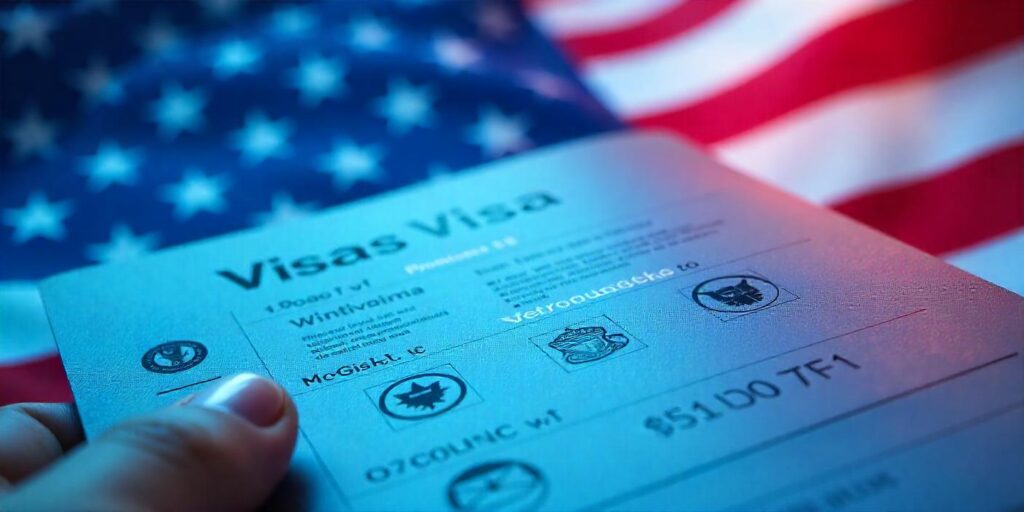A Guide to US Visas and Their Types: Everything You Need to Know
Traveling to the United States, whether for work, study, tourism, or family visits, often requires obtaining a US visa. With so many types available, the US visa process can seem complicated. But don’t worry; in this guide, we’ll break down the different types of US visas, what they entail, and how they can serve your travel needs. By the end, you’ll have a clear understanding of which visa might suit your situation.
1. Introduction to US Visas
The United States, being a popular destination, has created a variety of visa categories to cater to different types of travelers. A visa grants permission to enter the country and stay for a specific purpose and duration. US visas are broadly categorized into two types:
- Non-Immigrant Visas: For temporary stays, such as tourism, study, or work.
- Immigrant Visas: For those who intend to move to the U.S. permanently.
Each category has multiple visa types designed for specific purposes. Below, we’ll delve into some of the most common U.S. visa types and their specific requirements.

2. Non-Immigrant Visas
Non-immigrant visas are issued to individuals who intend to stay in the U.S. temporarily. Let’s explore the most common types of non-immigrant visas:
A. Visitor US Visas
- B-1 Visa (Business Visitor)
The B-1 visa is for travelers visiting the U.S. for business purposes. This can include attending business meetings, negotiations, and conventions, but it does not allow actual employment in the U.S. It’s ideal for professionals who need a short stay for business-related activities. - B-2 Visa (Tourist Visitor)
The B-2 visa is designed for those traveling for pleasure, tourism, or visiting family. It also covers medical treatment and participation in social events. This is the most common visa for tourists and is generally issued for up to six months. - B-1/B-2 Visa (Combined)
Sometimes, travelers need both business and tourist privileges. In these cases, the B-1/B-2 visa allows for both purposes, so long as the intent remains temporary.
B. Student Visas
- F-1 Visa (Academic Student)
The F-1 visa is for those who wish to study in the U.S. at an accredited academic institution, like a university or college. Students on an F-1 visa must be enrolled full-time and can work only in limited, approved on-campus jobs. - M-1 Visa (Vocational Student)
The M-1 visa is for students attending vocational or technical schools. While similar to the F-1, this visa type is specific to non-academic institutions, such as trade schools. - J-1 Visa (Exchange Visitor)
The J-1 visa is a popular choice for exchange students, scholars, and professionals participating in exchange programs. Many young professionals use this visa for internships or temporary work experience under cultural exchange programs.
C. Work Visas
- H-1B Visa (Skilled Workers)
The H-1B visa is for highly skilled professionals, often in fields such as technology, engineering, and medicine. U.S. employers sponsor these workers, who are usually required to have at least a bachelor’s degree in their specialty field. - L-1 Visa (Intra-Company Transferee)
For employees of multinational companies being transferred to U.S. offices, the L-1 visa is often the choice. It allows companies to bring skilled employees who hold managerial or specialized knowledge roles. - O Visa (Extraordinary Ability)
The O visa is for individuals who have extraordinary abilities in fields like arts, sports, business, education, or science. This visa type recognizes achievements and skills that are nationally or internationally recognized. - P Visa (Athletes and Performers)
The P visa applies to athletes, artists, and entertainers who are internationally recognized and wish to perform or compete in the U.S.
D. Specialty Visas
E-1/E-2 Visas (Trade and Investor Visas)
E-1 and E-2 visas allow individuals from countries that have trade treaties with the U.S. to enter for trade or investment purposes. The E-1 visa is for those conducting substantial trade, while the E-2 is for investors who have made a significant investment in a U.S.-based enterprise.
K-1 Visa (Fiancé Visa)
For those planning to marry a U.S. citizen, the K-1 visa allows a foreign fiancé(e) to enter the U.S. to marry their partner within 90 days of arrival. Following the marriage, the individual can apply for adjustment of status to become a permanent resident.
H-2A and H-2B Visas (Temporary Agricultural and Non-Agricultural Workers)
These visas provide options for temporary or seasonal workers. The H-2A visa applies to agricultural workers, while the H-2B is for non-agricultural temporary work, often in sectors like hospitality.
3. Immigrant Visas
For those aiming to make the U.S. their permanent home, an immigrant visa is essential. These visas typically lead to a Green Card, or permanent residency status.
A. Family-Based Immigrant US Visas
- IR (Immediate Relative) Visas
Immediate relatives of U.S. citizens, such as spouses, parents, and unmarried children under 21, may qualify for IR visas. This type of visa has no annual cap, making it one of the quicker paths to a Green Card. - F (Family Preference) Visas
The F visas cover other family relationships, like siblings of U.S. citizens and adult children. Unlike IR visas, these are subject to annual limits, and wait times can vary depending on the applicant’s country of origin and the specific relationship category.
B. Employment-Based Immigrant Visas
- EB-1 (Priority Workers)
The EB-1 visa is for individuals with extraordinary abilities, outstanding professors, researchers, and multinational executives. This category is highly competitive but offers a fast track to permanent residency. - EB-2 (Advanced Degree Professionals)
The EB-2 is for professionals holding advanced degrees or those with exceptional abilities. It requires a job offer, although in some cases, the U.S. may waive this if the applicant can prove their work will benefit the national interest. - EB-3 (Skilled Workers and Professionals)
The EB-3 category is for skilled workers, professionals with bachelor’s degrees, and other workers whose roles are needed in the U.S. labor market. Processing times may be longer due to higher demand for these visas. - EB-5 (Investor Visa)
The EB-5 visa provides an option for those who invest a minimum of $1 million (or $800,000 in targeted employment areas) in a U.S. business that creates or preserves at least ten jobs. This visa offers a path to permanent residency and is often sought by individuals with substantial financial resources.
4. Special Immigrant US Visas
Some visa types cater to specific circumstances that don’t fall under typical family or employment categories. Examples include:
- S Visa: For individuals cooperating with U.S. law enforcement in criminal investigations.
- SI/SQ Visas: For Afghans and Iraqis who assisted U.S. government operations.
- T Visa: For victims of trafficking, who qualify under specific humanitarian and protective guidelines.
5. The Application Process For US Visas
Though each visa has unique requirements, the general application steps remain similar:

- Determine the Visa Type: Start by identifying the visa that suits your purpose.
- Complete the DS-160 Form (Non-Immigrant) or DS-260 Form (Immigrant): This is the standard form to gather essential information.
- Pay the Application Fee: Fees vary by visa type, so ensure you confirm the amount.
- Schedule and Attend an Interview: At a U.S. Embassy or Consulate, you’ll answer questions related to your visa purpose, financial status, and travel history.
- Wait for Processing and Approval: Depending on the visa type, processing can range from a few weeks to several months.
6. Final Thoughts
Obtaining a U.S. visa can be a detailed process, but having the right information makes all the difference. Choosing the correct visa type depends on your unique purpose—whether you want to work, study, tour, or live permanently in the U.S. Remember that each visa has distinct eligibility requirements, benefits, and restrictions, so it’s essential to choose wisely.
For those uncertain, consulting with an immigration expert can provide clarity on navigating this process effectively.

